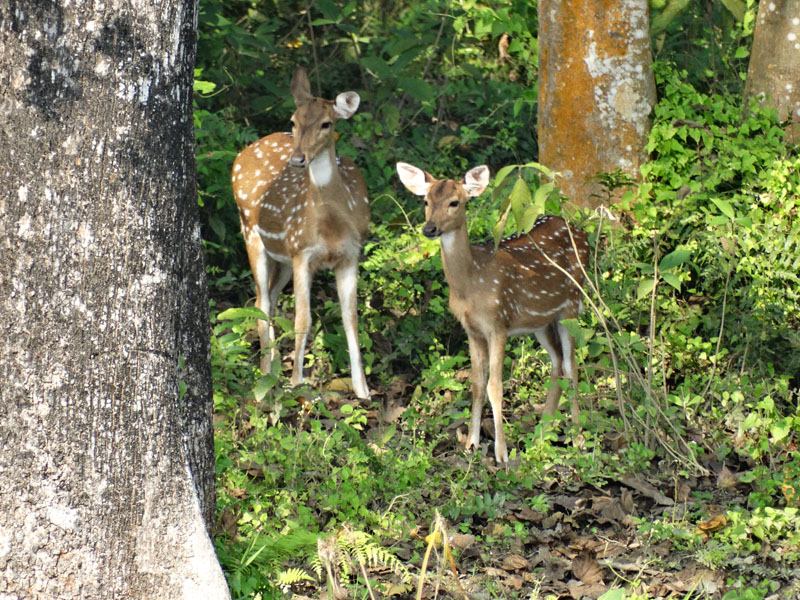A walk on the wild side
Lee Eames takes a break from the concrete jungle to explore nature in its abundance
The journey to Chitwan National Park began in Kathmandu, where my travelling companion and I transferred buses until we reached a line heading to Sauraha, the popular park entrance town. We hopped off the bus along the way to do some white-water rafting on the Rapti’s southward descent.
Soon after we stood in a light rain sporting life jackets and paddles, as our guides explained safety procedures in limited but comprehensible English. Standing by the river, I was full of bright, childlike energy. This break from the city’s smog, congestion, and concrete was already noticeable. Our guides grinned at my naivety when I challenged them to take us through the most dangerous rapids possible. But they agreed and we set off, two travellers at the front, two locals in the back.
It didn’t take long before the raft flipped and sent us all swimming. We didn’t paddle hard enough through the first big rapid, so the boat hung standstill for a moment, like an in-breath that had reached its crest. Time stood still until the river’s downward momentum overcame the great rapid. Suddenly I was flying through the air, and then drinking river-water as my lifejacket jerked me to the surface. My wish for intense outdoor experience was already fulfilled.
The rest of the rafting was filled with the serene beauty of green hills. Lush flora, white mist, and gray sky combined into a spooky yet gorgeous atmosphere. In between rapids, we looked back at the serpentine river, reflecting on its timeless journey from mountains to plains. In the end, we climbed onto solid ground with drenched and shivering bodies that concealed our satisfaction with the adventure.
We arrived at Sauraha via another local bus with broken seats and tired faces. By the time we arrived it was evening and the bustling tourist enclave was nowhere to be found. We stayed a dingy guest house near the chowk as the town proper was still a few kilometers away.
Arising with the sun, we made our way to the park entrance with sleepy faces but excited spirits. Neither of us had ever seen a tiger. We negotiated a good price for a full-days trek and soon were on our way. We rode local canoes into the jungle and spied alligators lurking in the muddy river. Once on the riverbank our guide explained how to scare off rhinos, tigers, and bears if they became aggressive.
Soon we were walking through the jungle on rhino trails and examining tiger footprints beside the path. Our guide walked through the thick tangle of trees, bushes, and plants like a man at home. After about an hour he stopped and silenced us with his finger, before springing up a tree and examining the riverbank with his hand for a visor. He climbed down quickly and murmured that a rhino was near. Soon we were creeping silently to a local watering hole, and reveling in the majesty of a great beast bathing.
The rest of the day was tiring but soothing. The jungle was alive with birds chirping their songs and light dancing with shadow as the sun shifted overhead. We never saw a tiger but did manage glimpses of wild boar, spotted deer, and some monkeys. We left the park around sunset with the sky a majestic mix of fluorescent colours. I enjoyed seeing the sunset nestled in nature, with no tall buildings to block my sight.
Unfortunately though, our time in nature was limited. Unlike the Tharu people that inhabited the jungle for centuries, we consumed some sights and headed back to the concrete jungle.





